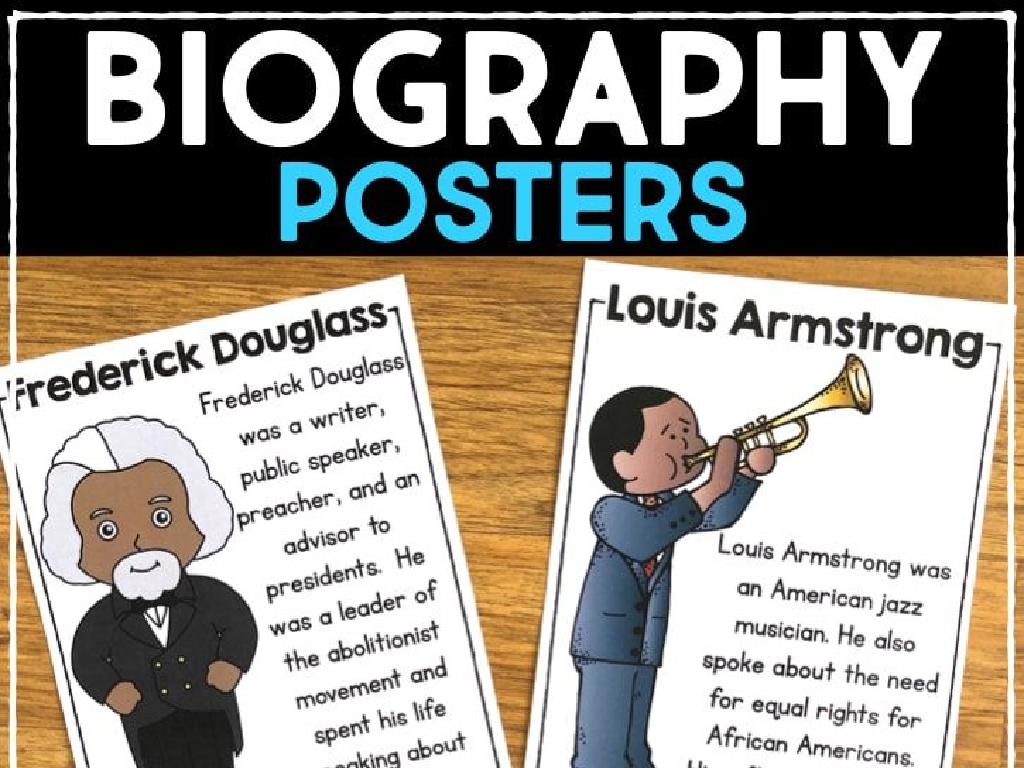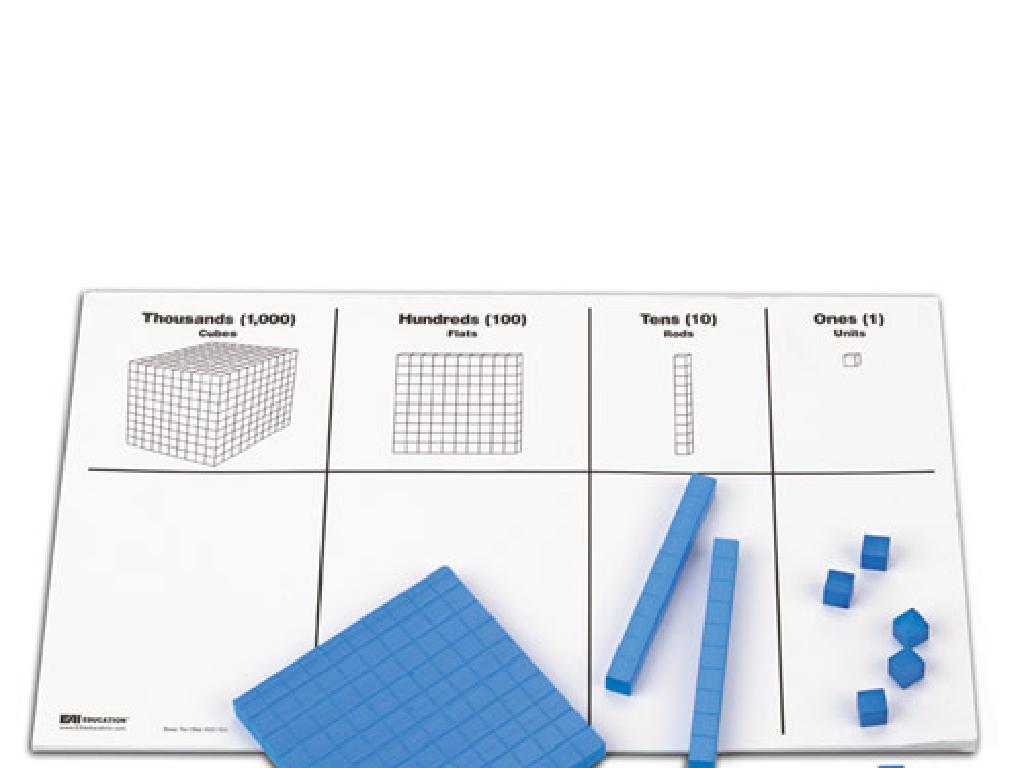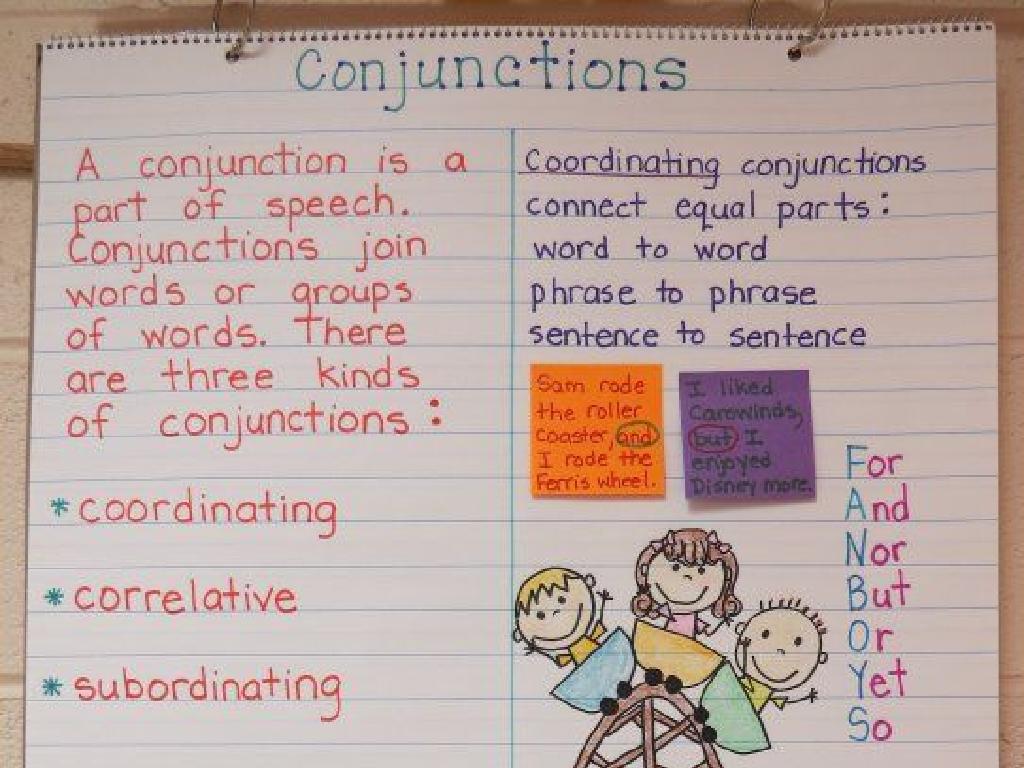Budget A Weekly Allowance: Word Problems
Subject: Math
Grade: Fourth grade
Topic: Financial Literacy
Please LOG IN to download the presentation. Access is available to registered users only.
View More Content
Introduction to Financial Literacy: Budgeting
– Understanding the value of money
– Money is used to buy things we need and want.
– What is Financial Literacy?
– Learning to manage money wisely.
– Budgeting your weekly allowance
– Plan how to spend your allowance over the week.
– Why budgeting is key
– Helps you save and make smart spending choices.
|
This slide introduces students to the concept of financial literacy with a focus on budgeting a weekly allowance. Begin by discussing the role of money in everyday life and its importance in obtaining goods and services. Explain financial literacy as the ability to understand and effectively use various financial skills, including personal financial management, budgeting, and investing. Emphasize the importance of budgeting as a fundamental skill in managing one’s allowance, which helps in making informed decisions about spending and saving. Encourage students to think about their own allowances and how they might budget their money to balance between immediate desires and saving for larger goals.
Understanding Budgets
– A budget is a spending plan
– Think of it as a guide for your weekly allowance
– It tracks your allowance
– Write down what you get and spend
– Ensures money for needs and wants
– Save for toys, games, and essentials like school supplies
– Teaches smart money habits
|
This slide introduces the concept of a budget to fourth-grade students, emphasizing its importance in managing their weekly allowance. A budget is explained as a plan that helps them decide how to spend their money wisely. It’s crucial for students to learn that keeping track of their allowance can help them ensure they have enough for their needs, like school supplies, as well as their wants, such as toys and games. Encourage students to think about their own spending and saving habits and how a budget could help them achieve their financial goals. Discuss the benefits of budgeting, such as avoiding overspending and learning to prioritize expenses. This foundational understanding sets the stage for more complex financial literacy concepts.
Income vs. Expenses: Budgeting Your Allowance
– Understanding Income
– Income is money you receive, such as an allowance.
– What are Expenses?
– Expenses are what you spend money on, like toys or snacks.
– The Role of a Budget
– A budget is a plan for spending and saving money wisely.
– Balancing Income & Expenses
– Aim to spend less than your income to save money.
|
This slide introduces the basic concepts of income and expenses, which are fundamental to understanding financial literacy. It’s important for students to recognize that income, such as a weekly allowance, is the money they have available to use. Expenses are the purchases they make with that money. A budget is a tool that helps us plan how to use our income effectively by tracking our expenses. Encourage students to think about their own allowance and what they spend it on. Discuss the importance of not spending more than they receive and the benefits of saving. Provide examples of how to create a simple budget, perhaps using a chart or a list, to help them plan their spending for the week.
Creating a Simple Budget
– Record your weekly allowance
– Note your expected expenses
– Expenses like snacks, games, or saving for a toy
– Plan spending or saving
– Decide how much to save and what to spend on
– Discuss importance of budgeting
|
This slide introduces students to the concept of budgeting within the framework of their weekly allowance. Start by explaining that a budget is a plan for how to spend money. The first step is to list their weekly allowance as income, which is the money they have available to use. Next, help them understand how to anticipate and write down expected expenses, such as money for school lunches or savings for a special toy. Then, guide them through planning how to allocate the remaining money between spending on immediate wants and saving for future goals. Emphasize the importance of making a budget to manage money wisely, and encourage them to think about their own spending and saving habits. In the next class, consider having students share their budget plans and discuss the choices they made.
Budgeting Your Weekly Allowance
– Real-life budgeting skills
– Solving allowance problems
– Example: Budgeting $10
– If you have $10, how much to spend on snacks or save for a toy?
– Saving vs. spending
– Discuss the importance of saving some money and spending wisely.
|
This slide aims to teach students practical budgeting skills using their weekly allowance as an example. Start by discussing the importance of budgeting in everyday life and how it can help them manage their money. Introduce simple word problems that involve calculating allowance and making spending decisions. Use the example provided to illustrate how to divide a $10 allowance between immediate wants, like snacks, and saving for a bigger item, like a toy. Encourage students to think critically about their choices and the value of saving. In the next class, students can share their own budgeting decisions and learn from each other’s strategies.
Class Activity: Plan Your Budget
– Receive a weekly allowance scenario
– Identify income and expenses
– List sources of income and all expected expenses
– Create a personal budget
– Allocate your allowance to different needs and wants
– Decide on savings amount
– Choose a percentage of your allowance to save for future use
|
In this activity, students will engage with practical financial literacy by managing a hypothetical weekly allowance. Provide each student with a different scenario detailing their allowance amount and potential expenses. Guide them to distinguish between income (allowance) and expenses (toys, snacks, etc.). They will then create a budget, allocating funds to necessary expenses, optional spending, and savings. Encourage them to think critically about their spending choices and the importance of saving. Possible activities: 1) Role-play with different allowance amounts, 2) Group discussion on saving strategies, 3) Drawing a budget pie chart, 4) Writing a reflection on their budgeting decisions, 5) Sharing their budget with the class to learn from each other’s approaches.
Sharing Our Budgets
– Volunteers present budgets
– Discuss budgeting methods
– How do different plans help meet goals?
– Learn the value of saving
– Why is it important to save a part of our allowance?
– Reflect on our budget choices
|
This slide is designed to facilitate a class discussion on budgeting a weekly allowance. Start by having a few volunteers share their budget plans with the class. Encourage them to explain how they allocated their allowance to different expenses or savings. Lead a discussion on the various methods of budgeting, highlighting that there’s no one-size-fits-all approach and that each plan can be unique to the individual’s goals. Emphasize the importance of saving and how it can benefit students in the long term. Conclude by asking students to reflect on their own budget choices and consider any adjustments they might want to make. As an activity, you can have students pair up to review each other’s budgets and suggest improvements, create a class savings goal, or simulate a savings scenario with a reward for the class if they ‘save’ enough ‘allowance’ over a set period.
Budgeting Wrap-up & Homework
– Recap: Why budgeting matters
– Homework: Budget your allowance
– Plan how you’ll spend/save your weekly allowance
– Document your budgeting process
– Write down each step you take to make your budget
– Share your experience next class
– Be ready to discuss what you learned and how you felt
|
As we conclude our lesson on budgeting, it’s crucial to emphasize the importance of managing money wisely. For homework, students are tasked with creating a budget based on their own weekly allowance. This practical exercise will help them apply the concepts learned in class to real-life situations. They should document their budgeting process, noting how they allocate funds for spending and saving. In the next class, students will have the opportunity to share their experiences, challenges, and successes. This will foster a discussion on the value of budgeting and encourage peer learning. The teacher should provide a simple budget template to guide the students and ensure they understand the assignment clearly.






